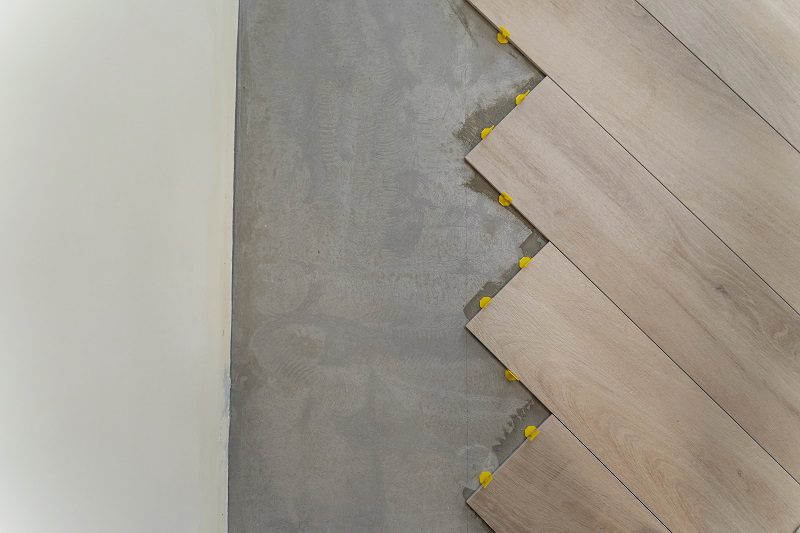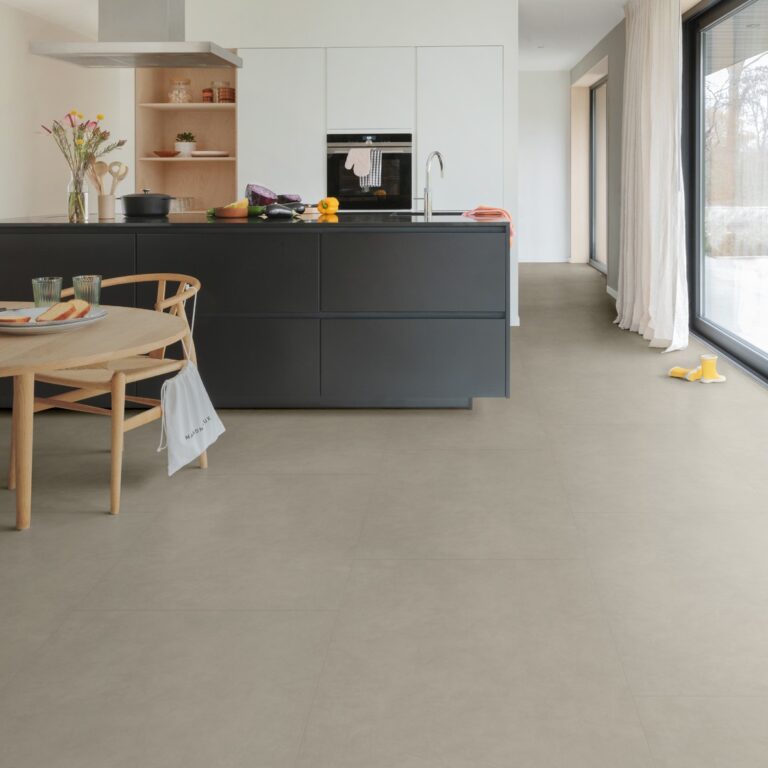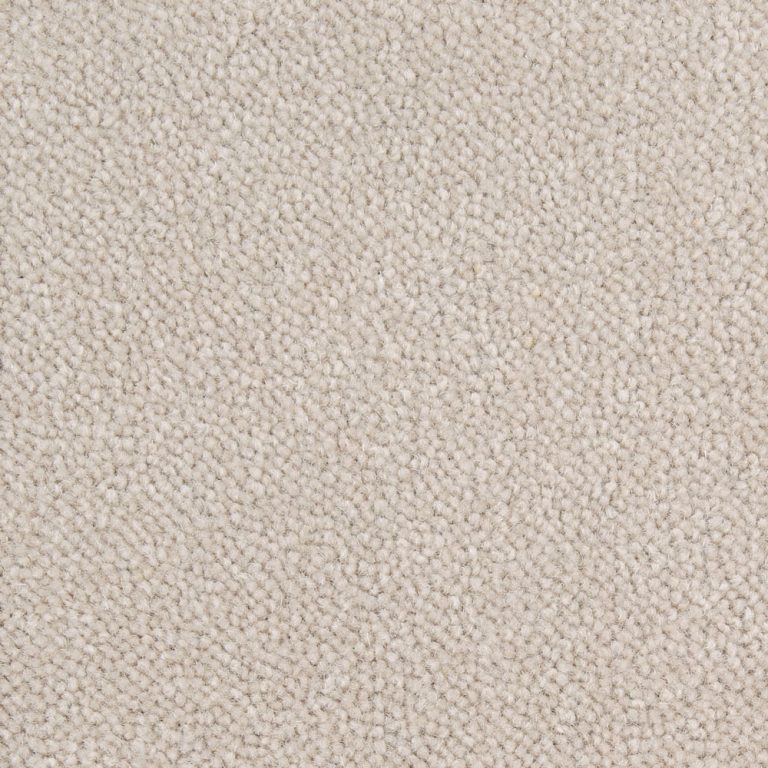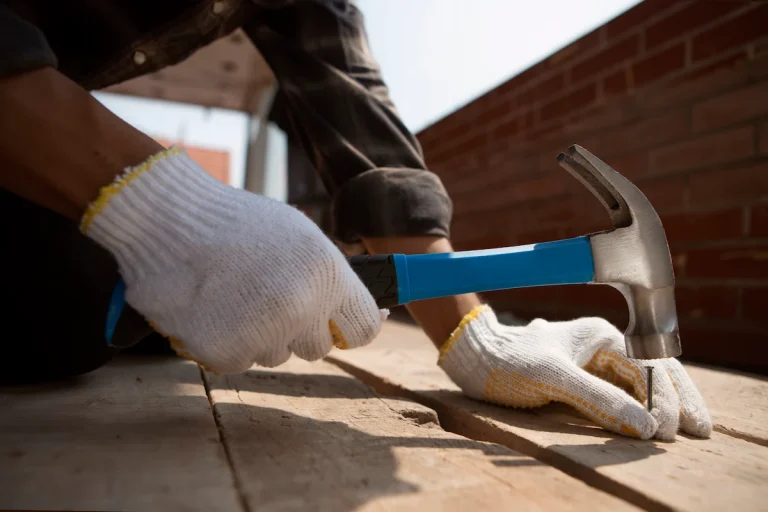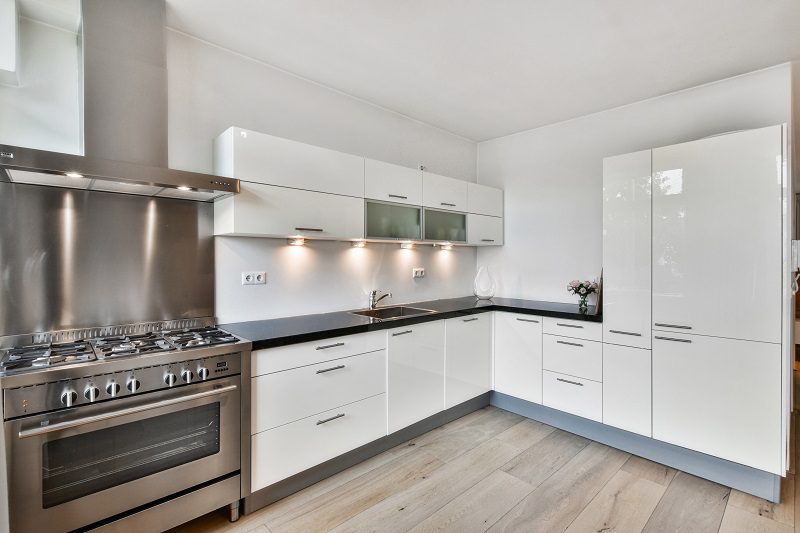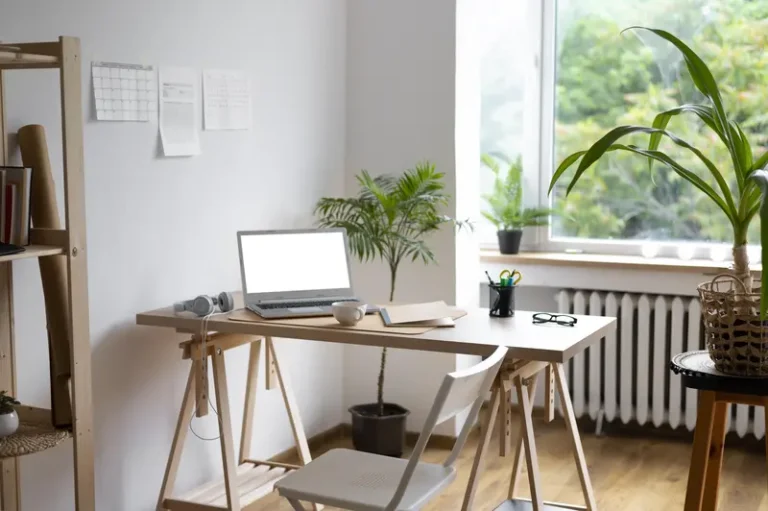Can you put vinyl flooring over tile? If you’re seeking the answer, this article will explore the benefits, factors to consider, and steps for installing vinyl flooring over tile. You’ll also learn about alternative options and maintenance tips to keep your vinyl flooring looking its best. Whether you’re looking for a cost-effective solution or a durable and long-lasting flooring option, we’ve got you covered. Let’s dive in and see if vinyl flooring over tile is the right choice for your space.
Key Points:
Can vinyl flooring be installed over tile? Vinyl flooring can be installed over tiles, offering a cost-effective and easy option for updating your floors. Factors such as the condition of the tiles, type of vinyl flooring, and preparation of the subfloor should be considered before installation. Maintaining vinyl flooring over tiles is easy with regular cleaning, avoiding harsh chemicals, and using furniture pads.
Can You Put Vinyl Flooring Over Tile?
“Can you put vinyl flooring over tile?” This is a common question for homeowners looking to refresh their floors without the hassle of removing the existing tile.
So, can you install flooring over tile? The answer is yes, vinyl flooring can be laid directly over existing tile, offering a convenient and cost-effective way to update the look of a space.
One of the key benefits is that it saves on labour and demolition costs, as the existing tile provides a stable and level base for the vinyl. It’s essential to ensure that the tile surface is clean, smooth, and free of any loose tiles or grout.
The Advantages of Installing Vinyl Flooring Instead of Tiles?
What flooring can you put over tiles? One of the answers is vinyl. Vinyl flooring install over tile offers several distinct benefits for homeowners seeking a cost-effective and efficient flooring solution.
You know, vinyl would be the best flooring option over existing tiles. One of the key advantages of opting for vinyl flooring over tile is its cost-effectiveness. Vinyl flooring is often more budget-friendly, both in terms of material cost and installation expenses.
The ease of installation makes vinyl flooring a practical choice for homeowners who prefer a hassle-free process. Its durability and resilience to heavy foot traffic and daily wear and tear make it a long-term investment.
The water resistance of vinyl flooring makes it an ideal option for areas prone to moisture, such as bathrooms and kitchens. Making the switch to vinyl flooring can bring significant advantages in terms of cost, convenience, and longevity.
a. Economical
One of the key benefits of laying vinyl flooring over tile is the cost-effectiveness it offers, providing a cost-effective alternative to traditional flooring replacement.
Choosing vinyl flooring can significantly reduce costs as this material is often more affordable than traditional tiles. Additionally, there’s a wide range of cost-effective vinyl options available, allowing homeowners to achieve the desired aesthetic without spending too much.
The installation costs of vinyl flooring are generally lower than those of tiles, attributed to its ease of installation. The long-term financial gains of opting for vinyl are substantial. The durability of vinyl flooring reduces the need for frequent replacements, ultimately saving on maintenance and replacement expenses. The energy-efficient properties of certain vinyl products can contribute to lower utility bills, offering additional cost savings in the long term.
b. Easy Installation
The easy installation process of vinyl flooring over tile makes it a convenient choice for homeowners seeking a hassle-free flooring upgrade.
Vinyl flooring offers a versatile and practical solution for enhancing the appearance of any room.
The ability to install vinyl flooring directly over pre-existing tile saves time and money on costly demolition and disposal.
With advancements in technology, vinyl flooring designs now mimic the look and texture of natural materials, providing a wide array of style options to suit various preferences.
c. Durable and Long-Lasting
Vinyl flooring over tile offers enhanced durability and longevity, providing a resilient flooring solution for high-traffic areas and busy households.
Compared to traditional tile flooring, vinyl stands out for its ability to withstand heavy usage without showing signs of wear and tear. Its resilient nature makes it an ideal choice for commercial spaces, such as offices, retail stores, and restaurants.
Vinyl requires minimal maintenance, making it an attractive option for homeowners seeking a practical yet stylish flooring solution. Whether it’s for a bustling kitchen, a family room, or a play area, vinyl flooring proves to be a versatile and long-term alternative to tile.
d. Water and Stain-resistant
The water and stain-resistant properties of vinyl flooring over tile make it an ideal choice for moisture-prone areas such as bathrooms, kitchens, and utility spaces.
Vinyl flooring offers remarkable durability and can withstand heavy foot traffic, making it a practical option for both residential and commercial settings.
Its low maintenance requirements further enhance its appeal, as cleaning only involves regular sweeping and occasional mopping.
The wide range of designs and textures available in vinyl flooring allows for versatile applications, catering to diverse aesthetic preferences.
Whether replicating the look of natural stone, wood, or tiles, vinyl flooring provides a cost-effective and attractive solution for enhancing the visual appeal of any space while ensuring long-term functionality.
Factors Should be Considered Before Installing Vinyl Flooring Over Tile
Before embarking on the installation of vinyl flooring over tile, it is essential to consider several key factors that can influence the success and longevity of the new flooring. These factors include:
a. State of the Tile
Assessing the condition of the existing tile is crucial before deciding to install vinyl flooring over it. This ensures a stable and suitable foundation for the new flooring.
Thoroughly inspecting the current tile allows homeowners or professionals to identify potential issues such as cracks, uneven surfaces, or loose tiles. These issues could affect the new flooring’s integrity and longevity.
Evaluating the levelness and cleanliness of the existing tile is essential for proper adhesion of the vinyl flooring. Any protruding grout lines or adhesive residue must be addressed before proceeding with the installation.
Preparing the existing tile surface by cleaning, smoothing, and levelling it can significantly impact the final result. This ensures a seamless and durable vinyl flooring installation. Any necessary repairs or adjustments should be made to create an optimal base for the new flooring.
b. Type of Vinyl Flooring
Choosing the right type of vinyl flooring for installation over tile is essential. Factors such as thickness, design, and compatibility with the existing surface should be considered.
When opting for vinyl flooring over tile, it’s important to select a product that offers adequate thickness. This will help conceal any imperfections in the underlying surface. Luxury vinyl tiles or LVT are popular choices for their durability, water resistance, and aesthetic appeal
The design options available in vinyl flooring provide a versatile range of styles, patterns, and colours. This allows homeowners to achieve the desired aesthetic appeal.
In addition, the compatibility of the vinyl flooring with the existing tile surface plays a crucial role. It ensures a seamless and durable installation.
Certain types of vinyl may require specific adhesives or underlay for proper adherence and stability over tile. Therefore, this aspect should be carefully evaluated before making a purchase decision.
See product: Floorify Planks Apple Crumble
c. Preparation of the Subfloor
To achieve optimal results, it’s crucial to thoroughly prepare the subfloor before installing vinyl flooring over tiles. This involves ensuring a smooth, level, and clean surface for the new flooring to adhere to.
Ahead of installation, it’s important to thoroughly clean the existing tile floor to remove any debris, dust, or residue. This will prevent any potential issues with the adhesion of the vinyl. Additionally, inspect the subfloor for any uneven areas or dips. If necessary, use a self-levelling compound to create a flat surface for the vinyl installation. If there are cracks or gaps in the tile, fill them with a suitable patching compound to create a seamless base. These preparations are crucial for a successful vinyl flooring installation.
d. Adhesive and Installation Method
Selecting the appropriate adhesive and installation method is crucial for securing vinyl flooring over tile, ensuring a robust and long-lasting bond between the two surfaces.
When determining the adhesive for this task, it’s important to consider Environment Agency (EA) compliance, as well as water vapour transmission rates to accommodate for potential moisture from the tile subfloor.
Consulting the manufacturer’s instructions is vital for selecting the correct kind of adhesive based on the specific vinyl composition.
A thorough inspection of the tile surface is essential, ensuring it is clean, smooth, and free of any contaminants or unevenness that could affect the adhesive bond.
How to Install Vinyl Flooring on Tile
The process of installing vinyl flooring over existing tiles involves several sequential steps to ensure a successful and visually appealing outcome for your space.
a. Clean and Prepare the Tile
Thoroughly cleaning and preparing the existing tile surface is the initial step in the installation process, ensuring an optimal foundation for the new vinyl flooring.
Regarding cleaning, it is essential to remove any dirt, grease, or debris from the surface. This can be achieved by using a suitable cleaning solution, such as a mixture of water and mild detergent. Scrubbing the surface with a scrub brush or sponge can effectively lift stubborn stains and residues.
After cleaning, a thorough assessment of the surface is crucial to identify any imperfections that could affect the adhesion of the vinyl flooring. Any cracks, uneven areas, or loose tiles should be addressed and repaired before proceeding. Taking necessary precautions during the cleaning and preparation process is vital for a successful installation. This includes wearing protective gear, such as gloves and goggles, and ensuring proper ventilation in the work area to minimise exposure to cleaning chemicals.
b. Measure and Cut the Vinyl Flooring
Accurately measuring and cutting the vinyl flooring to fit the designated space is a crucial step in ensuring a precise and tailored installation over the existing tile.
One of the initial steps involves carefully measuring the dimensions of the area where the vinyl flooring will be installed. Using a flexible tape measure, ensure to take accurate readings of both the length and width of the space.
It’s essential to account for any irregularities or obstacles in the room such as built-in cabinets or corners. After recording the measurements, transfer them to the vinyl flooring material, allowing for a small margin to accommodate potential mistakes or adjustments.
d. Apply Adhesive and Install the Vinyl Flooring
The application of adhesive and subsequent installation of the vinyl flooring over the prepared tile surface are critical stages that require attention to detail and proper technique.
When applying the adhesive, it’s essential to ensure that the surface is clean, dry, and free from any debris or contaminants that could compromise the bond.
The type of adhesive used should be compatible with both the vinyl flooring and the underlying tile to ensure a strong and lasting bond.
During the installation process, meticulous seam alignment is crucial for a seamless and professional finish. Proper positioning and joining of the vinyl planks or tiles contribute to the overall aesthetic appeal of the flooring.
It’s also important to follow best practices for installation, such as acclimatising the flooring material to the room’s temperature and humidity levels before installation to prevent buckling or warping.
Alternatives to Install Vinyl Flooring on Tile
While installing vinyl flooring over existing tile is a viable option, there are alternative approaches that homeowners can consider to achieve a fresh and updated flooring aesthetic. One way to update flooring without removing tile is by using floor levelling compounds.
These compounds can be applied over the existing tile to create a smooth surface for new flooring. Another popular option is floating vinyl flooring, which can be installed directly over most existing floors, including tile, saving time and labour costs.
a. Removing the Tile and Installing Vinyl Flooring
Complete tile removal followed by the installation of vinyl flooring presents an alternative solution to updating the floor with a fresh and coherent surface.
Before starting the installation process, it’s important to prepare the area. This includes removing all furniture and obstacles and carefully removing the old tile. Proper disposal is necessary as the old tiles may contain adhesives or materials that require responsible handling. Once the space is cleared and prepared, the installation can commence. Whether it’s a DIY project or done by professionals, vinyl flooring offers numerous benefits, including durability, moisture resistance, and easy maintenance, making it a top choice for homeowners.
b. Installing Floating Vinyl Flooring
The installation of floating vinyl flooring presents a versatile and non-invasive alternative to laying flooring directly over the existing tile, offering flexibility and ease of installation.
This innovative flooring solution is designed with interlocking planks or tiles that can be installed without the need for adhesive, making it ideal for DIY enthusiasts and professional installers alike.
The floating method allows the vinyl material to expand and contract with temperature changes, reducing the risk of buckling and warping. Its resilience to moisture and ability to be installed over uneven surfaces make it suitable for various spaces, including bathrooms, kitchens, and basements.
Floating vinyl flooring offers a cushioned feel underfoot, noise reduction, and easy maintenance.
c. Using a Floor Leveling Compound
Using a floor levelling compound provides a practical solution for addressing uneven tile surfaces and preparing a smooth foundation for various flooring options, including vinyl flooring.
Floor levelling compounds are designed to correct minor imperfections and unevenness in the substrate, ensuring a level and stable base for the new flooring.
These compounds offer the advantage of being self-levelling, which means they can easily conform to the shape of the floor for consistent coverage and minimal effort.
They are suitable for use on a wide range of substrates, including concrete, plywood, and existing tile, making them versatile for different renovation projects.
Tips for Maintaining Vinyl Flooring Over Tile
Upon successfully installing vinyl flooring over tiles, it is essential to implement proper maintenance practices to ensure the longevity and aesthetic appeal of the new flooring surface.
Regular cleaning is crucial for maintaining vinyl flooring over tiles. Start by sweeping or vacuuming the floor to remove dirt and debris.
For deeper cleaning, use a damp mop with a gentle cleaning solution suitable for vinyl floors. Avoid using abrasive cleaners or harsh chemicals that can damage the surface.
Placing felt pads under furniture legs can prevent scratches while using mats at entrances can minimise dirt accumulation.
Avoiding excessive exposure to direct sunlight will help prevent discolouration over time.
a. Regular Cleaning
Regular cleaning is essential for maintaining the appearance and condition of vinyl flooring over tile. This ensures a clean and welcoming environment in your home.
Using the right cleaning products is crucial to avoid damage while effectively removing dirt and stains. Proper techniques such as sweeping regularly to prevent debris from accumulating and wiping up spills immediately can help preserve the integrity of the flooring.
Additionally, implementing preventive maintenance measures such as placing mats at entryways and using furniture pads can contribute to prolonging the life and beauty of your vinyl flooring.
b. Avoid harsh chemicals
To preserve the integrity and finish of vinyl flooring over tile, it is essential to avoid the use of harsh chemicals and abrasive cleaning agents that may compromise the surface quality.
Opting for gentle cleaning agents is pivotal for maintaining the vinyl flooring’s lustre and durability. The market offers various specialised products designed specifically for vinyl floor care, such as pH-neutral cleaners and mild soaps. These options effectively remove dirt and stains without causing any damage.
Incorporating preventative measures is equally crucial. Placing doormats at entrance points minimises the tracking of dirt and debris onto the vinyl flooring. Using furniture protectors under heavy items can prevent scratches and scuffs, preserving the pristine appearance.
Considering the long-term care of vinyl flooring, regular maintenance routines are imperative. From routine sweeping to occasional deep cleaning, a consistent regimen ensures the prolonged beauty and resilience of the flooring.
c. Utilise Furniture Pads
Implementing furniture pads or protective accessories is a proactive measure to prevent scratches and dents on vinyl flooring over tile caused by heavy furniture and sharp objects.
By using furniture pads, individuals can safeguard their vinyl flooring from the damaging impact of heavy furniture, such as sofas, tables, and chairs.
When placing furniture pads, it is essential to ensure that they are clean and free of any debris that could potentially cause scratches. Regularly inspecting and replacing worn-out pads will help maintain the effectiveness of the protective layer. In the long run, this simple precaution can significantly extend the lifespan of the vinyl flooring, preserving its appearance and structural integrity.
If you are considering installing vinyl flooring over tiles, it’s important to choose high-quality vinyl flooring that is compatible with the tile substrate to ensure a durable and long-lasting installation. Lucky you! TEKA Flooring provides various options of cushion vinyl tiles that you can customise to match your taste and home concept.
Consult with us if you are feeling unsure about which design would be best for your space. TEKA flooring is here to help you make the perfect choice!
Read also: What To Put Under Vinyl Flooring? Choose Based On The Room!


























